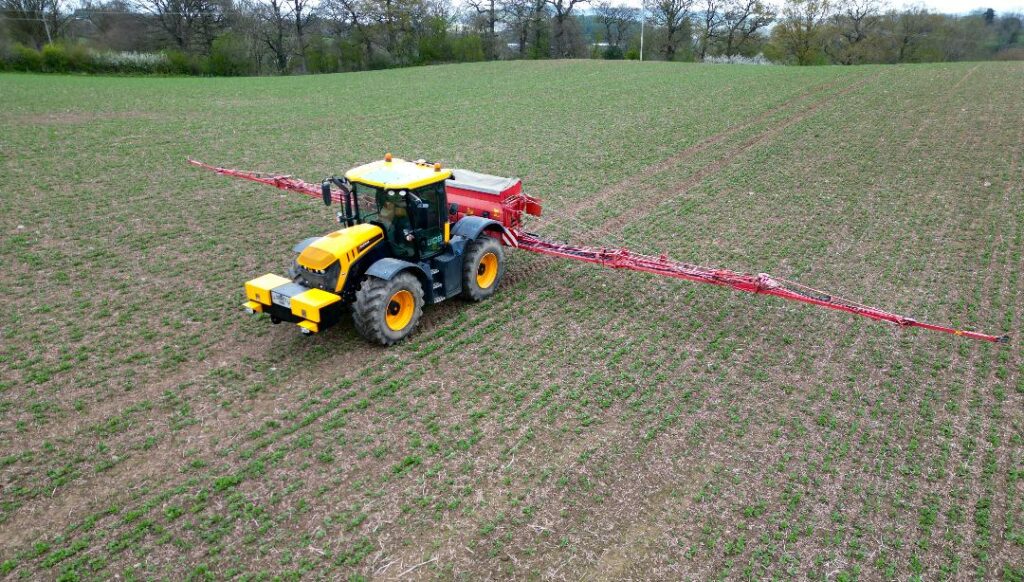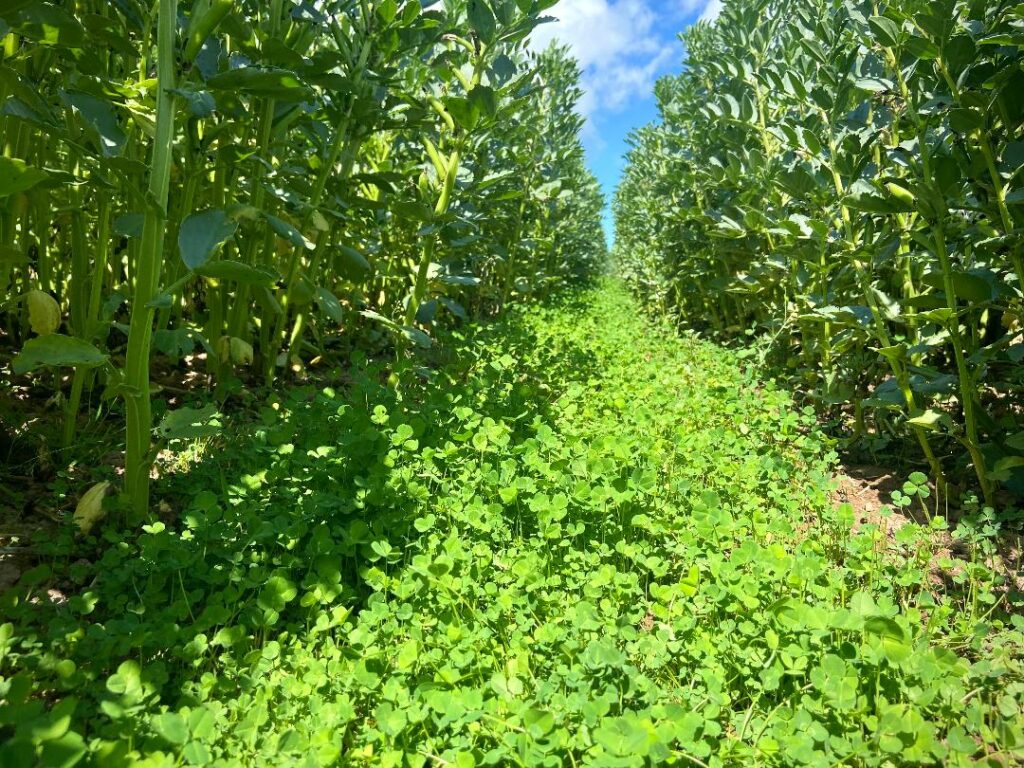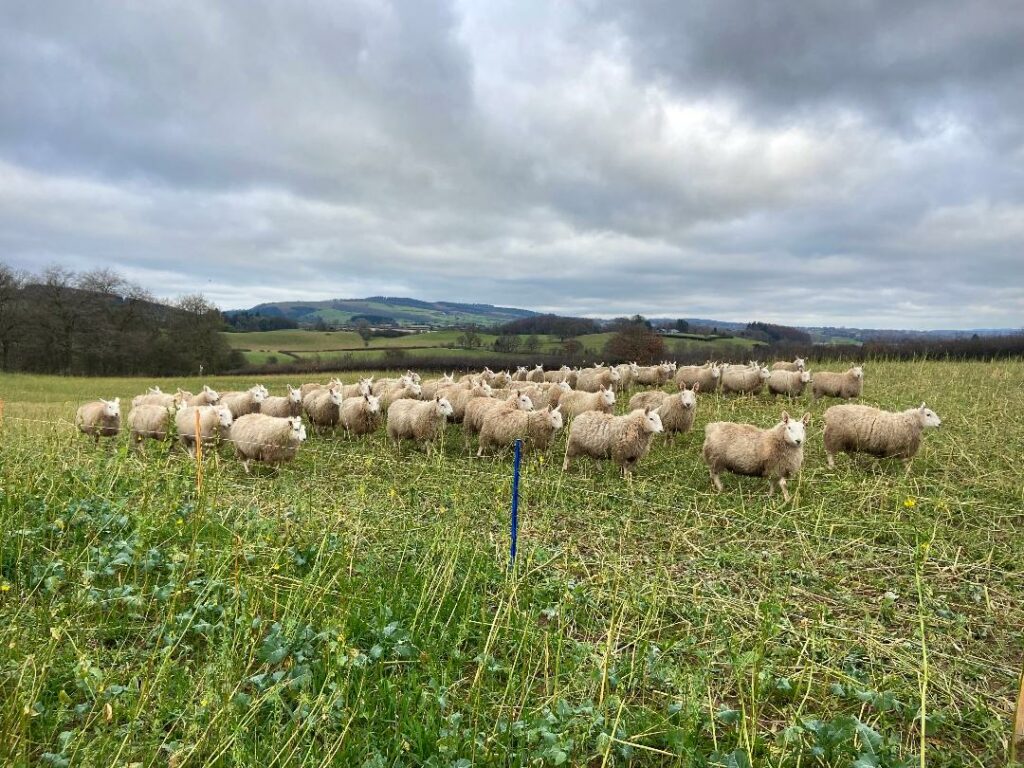March 2024
The good, the bad and the downright ugly is the only way I can describe the state of our autumn drilled crops as we head into the spring. Throughout the later stages of 2023 as a result of the unrelenting rain I was pitifully watching our area of cereals for next harvest diminishing by the day.
The rain didn’t cease. In the time period between October and February we received 621mm of rainfall, an astronomical amount considering the average for this period over the previous ten years is 346mm. However, the winter went on and thankfully something did muster the strength to grow. At a conservative estimate I would say 80% of our wheat has pulled through and is now, on the most part looking quite well. It’s very encouraging to see our direct drilled crops on the whole faring quite well in the face of uncompromising weather conditions. However, we can’t have it all and the thorn in my side currently is the two fields of direct drilled oats, adjacent to the main road that have completely failed. This is sure to keep the passing combi drill enthusiasts happy for the time being.
Harvest 2023 was one that I would happily not repeat. Wet grain, wet straw and wet ground conditions. You might be sensing a recuring theme here. Aside from the moisture there were wins to be taken.
The wheat variety of choice was primarily Extase with some areas down to a three-way blend of Extase, Costello & Graham. There was no real yield difference between the areas. There was however a markable difference in disease levels in the crop. Contrary to conventional wisdom the straight Extase was a lot cleaner than the areas planted with the mix of the three varieties. I think perhaps the contents of my blend could do with a bit of refining. The average farm yield came in at 8.29t/ha. No records broken here. However, that’s not what I’m going for. Fungicide use was kept to a minimum; some fields not receiving anything, some just a T2 and others a T1 &T2. N rates were kept down, ranging from 70kg N/ha to 115kg N/ha, and everything was direct drilled either with a Weaving Sabre Tine or John Deere 750A with the exception of one field that needed a reset with a sumo and combi drill. The cost of production for 2022/23, all in, was £139/ton. I have now sold everything (bar 20tons that I forgot about, still in central storage) for an average price of £197/ton ex farm, leaving plenty of meat on the bone. Whether this will be the case for the 2023/24 season? I am really not sure.

I was satisfied with the spring beans. Drilled in the last week of February, delivering a yield of 3.81t/ha and thanks to a spell of balmy weather in September we managed to cut them dry. It’s a good job that it was dry as the clover and trefoil mix that was under sown in the beans had done rather well by the time harvest came around. In the areas it wasn’t stunted by drought it had ended up level with or higher than the lowest bean pods which displeased my combining contractor. The clover/trefoil was broadcast into the bean crop using a Kuhn Aero in the last week of April. A reasonable amount has persisted into the following wheat crop and the ground walks absolutely beautifully because of it. However, due to the previously mentioned harvesting complications it’s an experiment I probably won’t try again.
Our area of Mascani winter oats did well, yielding 7.49t/ha. Didn’t have a sprayer through it over the growing season and received just 65kg N/ha. There was a lot of straw, all of which got absolutely soaked the day after it was cut and required turning two or three times, which was fun.

The Tardis winter barley was a complete waste of time. Having never grown any barley in my farming career I decided to put a few fields in. This went in place of where we would normally grow a second wheat in the rotation. It yielded 7.64t/ha, cost about the same amount to grow as a wheat crop, we cut it all at 18% and it was sold for a considerable amount less than the wheat. Never again.
Despite the aforesaid pitfalls of farming in the wet old west, there are a few benefits. Our cover crops once again absolutely flew out the ground with no shortage of soil moisture to get them going nicely. The eight-way mix of Mustard, Kale, Phacelia, Forage Rape, Linseed, Vetch, Sunflowers & Fenugreek has kept our biomass reduction team AKA replacement ewe lambs well fed over the winter. I make sure to graze the cover crops in a very similar manner to how I graze our grassland. Graze a third, trample a third, leave a third behind. That way the lambs are always being kept full but never wading around in mud, making a mess of the field. The proportion of the cover crop that is trampled into the ground helps protect the soil from heavy rain which has proven to be very important this winter. The more conventionally minded onlookers probably titter about how much of the crop I am ‘wasting’. The lambs have finished grazing the cover crops now and if we could manage just a week without rain, I might be able to get the wheels in motion establishing some spring beans. This I know is wishful thinking.

At the time of writing this piece (1st March) my attention is turning towards lambing, calving, the beginning of the grazing season and all the work that comes with it. I think 2024 could be the year for Horn rather than Corn. The beef and lamb trade are absolutely flying at the moment, making the current value of cereal commodities look rather pathetic. I’m hoping for an early turn out this spring so that we can carry some straw over to next winter. Due to the failed oats and areas of dodgy wheat we’re at risk of being in a straw deficit. As well as an early turn out it would also be good if we could receive nice steady rainfall at regular intervals throughout the summer. It would be lovely to have some decent growing conditions, meaning I could drop a few fields out of the rotation to stockpile grass for the cows to come back to in November/December time, extending the grazing season. Anyway, I’m tempting fate now, the nice steady rain is probably a pipe dream as I expect once the current deluge ends we’ll immediately be thrust into months of extreme drought!
I wish all the readers good luck with the coming growing season. I think it’s acceptable to say that we’re all starting it on the back foot this year due to an assortment of reasons. As I look out the window beside me it is currently snowing, so here’s hoping for little bit of sunshine soon to make our lives just that bit easier!



